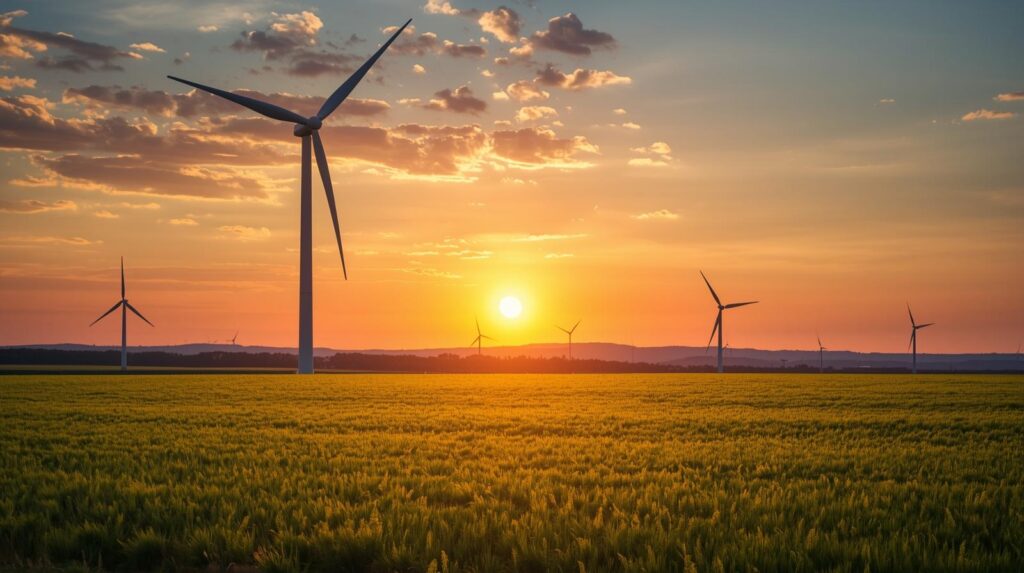The transition to clean energy is not only a technological evolution but a critical necessity in today’s world. As concerns about climate change and environmental sustainability intensify, understanding the various sources of clean energy becomes essential for industry leaders and innovators alike. This comprehensive guide delves into the landscape of sustainable energy sources, exploring their potential, implementation challenges, and future prospects.
Clean energy refers to energy derived from renewable, zero-emission sources that do not pollute the atmosphere when used. It encompasses a range of technologies and fuels that are both sustainable and environmentally friendly.
What Is Clean Energy Charging?
Clean energy charging specifically relates to the use of renewable sources to power electronic devices and electric vehicles. This approach not only reduces carbon footprints but also promotes energy efficiency and sustainability. By leveraging clean energy for charging, businesses and individuals can significantly contribute to reducing greenhouse gas emissions.
Types of Sustainable Energy Sources
Solar Energy
Solar energy harnesses the power of the sun through photovoltaic cells to generate electricity or heat. It is one of the most abundant and accessible forms of renewable energy available today. Solar panels can be installed on residential, commercial, and industrial properties, making it a versatile option for clean energy adoption.
Wind Energy
Wind energy captures the kinetic energy of wind currents using turbines. Wind farms, both onshore and offshore, are increasingly common, offering a scalable solution to energy needs. As technology improves, the efficiency and output of wind turbines continue to rise, making it a key player in the clean energy sector.
Hydropower
Hydropower generates electricity by using the flow of water, typically from a dam or river. It is a highly efficient and consistent source of power, providing a significant percentage of the world’s renewable energy. However, the environmental impact of large dams and the disruption of aquatic ecosystems remain concerns that need to be addressed.
Geothermal Energy
Geothermal energy taps into the Earth’s internal heat to generate electricity or provide direct heating. This form of energy is reliable and available regardless of weather conditions, offering a stable supply. Geothermal plants have a small footprint and can operate 24/7, making them a valuable addition to the clean energy mix.
Biomass Energy
Biomass energy is produced from organic materials, such as plant and animal waste. This energy source can be converted into electricity, heat, or biofuels. While it is renewable, the sustainability of biomass depends on the methods of sourcing and processing the materials, as well as the potential for competition with food resources.

The Benefits of Clean Energy
Environmental Impact
Clean energy sources offer significant environmental benefits by reducing carbon emissions and decreasing dependency on fossil fuels. They play a crucial role in mitigating climate change and improving air quality.
Economic Advantages
Investing in clean energy creates jobs, stimulates economic growth, and reduces energy costs over time. As technology advances and adoption increases, the cost of renewable energy continues to decline, making it an economically viable option for many businesses and consumers.
Energy Security
By diversifying energy sources, countries can enhance their energy security and reduce reliance on imported fuels. Clean energy technologies provide a pathway to energy independence, stability, and resilience.
Challenges in Implementing Clean Energy
Technological Limitations
While clean energy technologies have advanced significantly, challenges remain in terms of efficiency, storage, and grid integration. Developing innovative solutions to overcome these barriers is essential for widespread adoption.
Infrastructure and Investment
The transition to clean energy requires substantial investment in infrastructure and technology. Policymakers and industry leaders must collaborate to create supportive frameworks and incentives to drive investment and development.
Regulatory and Policy Hurdles
Regulations and policies play a crucial role in the adoption of clean energy. Streamlined permitting processes, favorable tax incentives, and supportive policies are necessary to accelerate the deployment of renewable energy projects.
Future Prospects of Clean Energy
The future of clean energy is promising, with continued advancements in technology and increasing global commitment to sustainability. Innovations in energy storage, smart grid technology, and energy efficiency are paving the way for a more sustainable and resilient energy system.
Innovations on the Horizon
Emerging technologies, such as advanced battery storage, hydrogen fuel cells, and artificial intelligence, hold the potential to revolutionize the clean energy landscape. These innovations will enhance the efficiency, reliability, and integration of renewable energy sources.
The Role of Business Leaders
Business leaders and strategists play a pivotal role in driving the clean energy transition. By integrating sustainable energy solutions into business operations, companies can achieve both environmental and economic benefits, positioning themselves as leaders in the green economy.
Conclusion
Clean energy represents a transformative shift towards a sustainable future. As technology evolves and adoption increases, the potential for clean energy to reshape industries and societies becomes increasingly apparent. By understanding and embracing these technologies, industry leaders can drive innovation, enhance competitiveness, and contribute to a more sustainable world.




